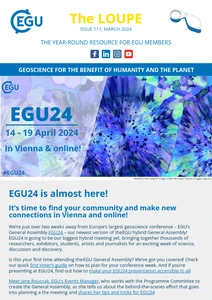President: Jeroen van Hunen
(gd@egu.eu)
Deputy President: Laetitia Le Pourhiet
(laetitia.le_pourhiet@sorbonne-universite.fr)
Studies related to the Geodynamics Division include all aspects of geodynamic processes in the lithosphere, mantle, and core. They encompass different approaches, including observations, imaging, theory, modelling (numerical simulations and laboratory experiments), and interpretation. Examples include the dynamics of subduction, mid-ocean-ridge processes, vertical and horizontal plate movements driving mountain building and basin formation, lithosphere dynamics, mantle convection, and core dynamics.
Recent awardees

The 2024 Augustus Love Medal is awarded to
Taras Gerya for his novel approach in using computational geodynamics to address outstanding tectonic and geodynamic questions in a way that reaches out to petrologists, geochemists, and structural geologists.
Read more

- 2024
- Division Outstanding Early Career Scientist Award
The 2024 Division Outstanding Early Career Scientist Award is awarded to
Anne Glerum for her contributions in geodynamics, including providing new insight in the East African rift system, methodological advancement of geodynamic modelling techniques, and outstanding community service.
Read more

The 2023 Augustus Love Medal is awarded to
Thorsten W. Becker for outstanding research contributions in regional and global geodynamics, seismology, tectonics, and earthquake source processes, and for scientific leadership and selfless service.
Read more

- 2023
- Division Outstanding Early Career Scientist Award
The 2023 Division Outstanding Early Career Scientist Award is awarded to
Ágnes Király for her significant contributions in geodynamics, including contributions on viscous anisotropy in the mantle and new interactions between subduction and geological deformation and volcanism.
Read more

- 2023
- Outstanding Student and PhD candidate Presentation (OSPP) Award
The 2023 Outstanding Student and PhD candidate Presentation (OSPP) Award is awarded to
Philippa Slay Observed Dynamic Topography and Cenozoic Magmatism of the Eastern Seaboard of Australia
Read more

- 2023
- Outstanding Student and PhD candidate Presentation (OSPP) Award
The 2023 Outstanding Student and PhD candidate Presentation (OSPP) Award is awarded to
Tinghong Zhou Did the dynamo cease during the Ediacaran Period prior to inner core nucleation?
Read more
Latest posts from the GD blog

The Sassy Scientist – Scaling the Peaks of Academic Hierarchy: A PhD Expedition
This unstable weather and academia where PhD students are often treated like rare species – elusive, misunderstood, and occasionally overlooked in the grand canopy of academia – always bring me down: I can’t help but feel a bit under the weather (do not throw anything at me, pls). So John asks: Is it fair to exclude PhD students from staff activities and meetings, and how can I challenge this hierarchy? Dear John, Aaah, the audacity of academia never fails to …
Read more

Geo-movie: Fire of Love (2022), a love story of Katia, Maurice and volcanoes
Geo-movies are often Sci-Fi movies, which usually borrow disastrous concepts from earth science, and turn them into the end of the world while crystallizing humanity along with it. “Fire of Love”, on the other hand, is a 2022 documentary movie that explores the lives, relationship and careers of legendary volcanologists Katia Krafft and Maurice Krafft. The movie is directed by Sara Dosa, and most of the movie is made based on the hundreds of hours’ video footage and thousands of …
Read more

Join the EGU GD Blog Team!
It’s that time of the year again! The EGU Geodynamics blog is accepting new team members for the year July 2024-June 2025! Being an EGU blog team member is a great opportunity to promote exciting new research and meet new people from the geodynamic community and beyond. It is also a great way to make an active contribution to the community and make yourself known. So why not give it a try? If you’re interested in joining our team or …
Read more

Top 3 Geoparks to Visit in Greece
Have you started planning your summer holidays, or do you desperately need to escape work? Well, rest assured we’ve got you all covered. In this week’s blog, we aim to take you on a Geojourney around the most diverse and spectacular Geoparks you can visit, the next time you travel to Greece. Greece is well known as one of the top travel destinations around the world with its dreamy sandy beaches, shimmering blue waters, and an amazing local food scene …
Read more
Current issue of the EGU newsletter











